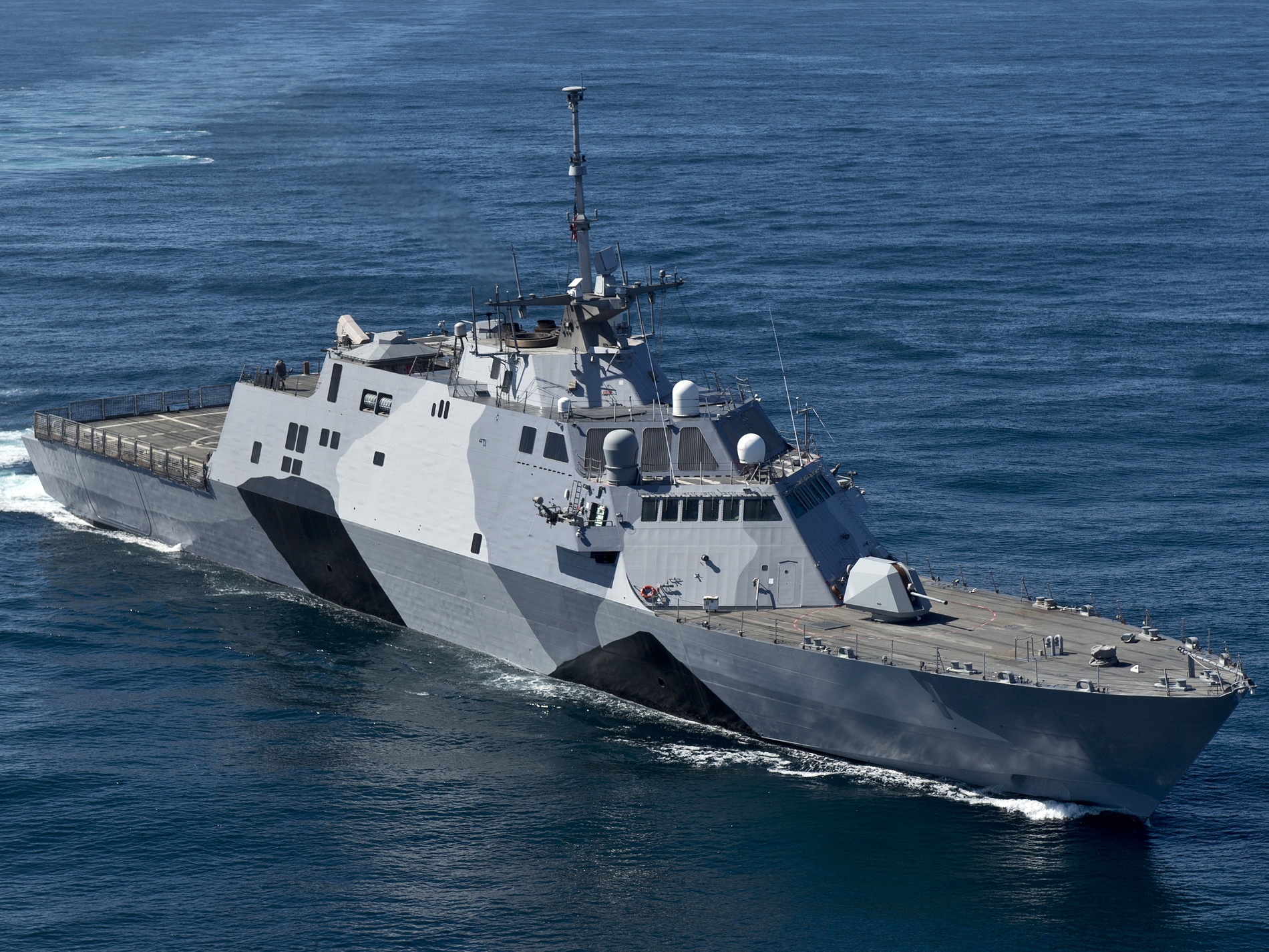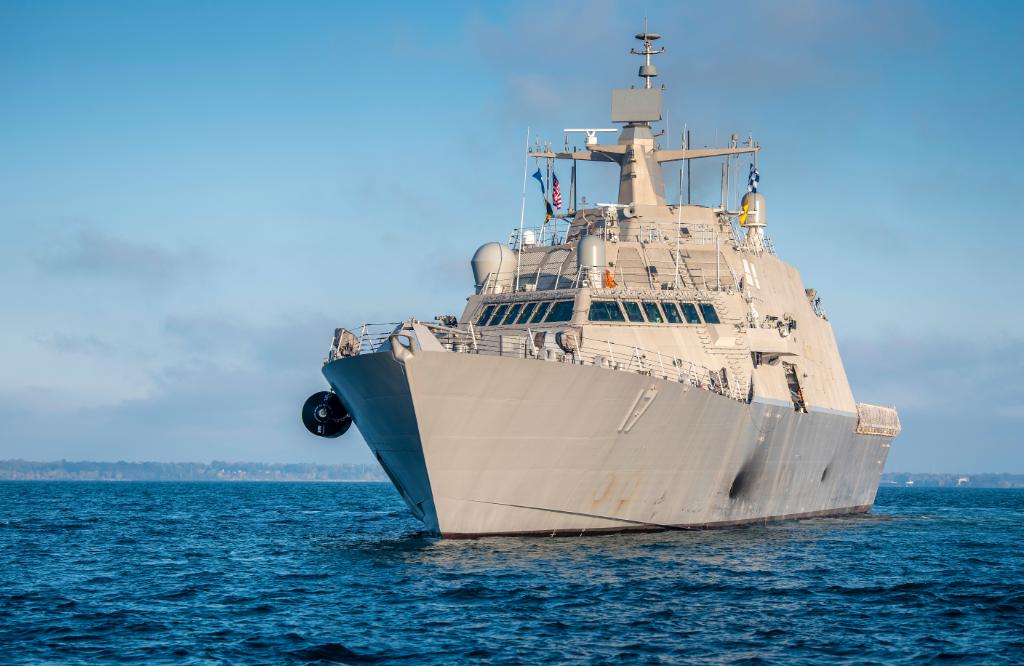Earlier this month, US Naval Chief Admiral Michael Gilday advised the House Armed Services Committee that nine Littoral Combat Ships (LCS), some of which were recently commissioned, should be decommissioned owing to unsatisfactory performance.
US Threatens China With ‘Military Action’ If It Breaches The Red Line; Can US Navy Fight PLA On Its Home Turf?
Despite attempting to outmatch China’s naval fleet, Admiral Gilday had justified plans to get rid of these vessels in the fiscal year 2023.
“I refuse to put an additional dollar against a system that would not be able to track a high-end submarine in today’s environment,” he had told the Committee.
Now, Admiral Gilday has suggested that the Navy can sell some of the vessels to friendly countries and allies, including countries in South America. He made these comments while testifying before the Defense Sub-Committee of the United States Senate Committee on Appropriations while responding to an alternative.

The Navy’s budget request for the Fiscal Year 2023 discloses that nine Freedom-class LCSs will be decommissioned by the end of 2024. Furthermore, two Independence-class LCS will also be decommissioned roughly around the same time, as per the long-term force plan.
The Navy’s estimated FY23 budget has noted that decommissioning the ships will save the service $391 million. This, however, would only fund a fraction of the $3.2 billion costs of the nine littoral combat ships.
This is probably where the idea of selling these ships to friendly countries comes into the picture. Though Admiral Gilday suggested that the ships could be sold, he offered little insight into how that process would take place.
Admiral Gilday stated during the hearing that the decision to decommission the nine Freedom-class LCS — which are fairly young ships and cost billions to develop — was made to “stratify” the Navy’s range of capabilities. He contended, however, that the ships may prove to be beneficial to the navies of US allies and partners.
The Freedom-variant littoral combat ship USS Wichita (LCS 13) and the Dominican Republic navy conducted a bilateral maritime interdiction exercise off the coast of Santo Domingo, May 5, 2022.
Read more: https://t.co/c2MsOSlznP pic.twitter.com/1us2S3Ag44
— U.S. Navy (@USNavy) May 10, 2022
“There are countries in South America which would be able to use these ships that have small crews. Instead of just considering scrapping them as a single option, I think there are others we can look at.”
With high stakes for the US in any conflict that could erupt in the Indo Pacific region (against China), US Navy understandably wants to focus more on the quality of operations that its vessels are designed to undertake. Admiral Gilday admits that the LCS has failed in anti-submarine ops.
Since the LCS was built to operate in shallow areas like the South China Sea, they were welcomed and lauded as part of the US deterrence against China. However, the decommissioning of so many in such a short time is an admission that the costly surface combatants have fallen far short of expectations, reported CNN.

The US Navy plans to decommission the vessels to free up funds for a more capable and combat-ready fleet in the face of the growing Chinese threats, especially in the wake of US President Joe Biden’s promise to counter China’s military if it were to attack Taiwan.
A US congressional report has already admitted that the single biggest threat to its security at sea, China, has the largest Navy in the world by size. The millions of dollars spent on building these less than useful Littoral Combat Ships could thus be recovered by selling them to allies with limited offensive objectives than those of the US Navy.
Why Decommission The Freedom-Class LCS?
Admiral Gilday’s suggestion about selling the ships to friendly countries came as a response to Senator Jerry Moran requesting clarity on why the Navy wanted to decommission the Freedom-class LCS.
The Senator questioned whether “other uses” for the ships could be figured out given their previous role in combating drug smuggling.
Moran backed his argument by citing collaborative activities in 2021 between the Dominican Republic’s Navy and the USS Sioux City (LCS-11) in the busting narcotics trade.
“One of the nine Freedom-class Littoral Combat Ships was involved in joint exercises with the Dominican Republic Navy, those exercises, as I understand, were successful and they interdicted drug smugglers.”
?? USS Sioux City participates in a bilateral maritime interdiction exercise with the ?? Dominican Republic Navy (@ArmadaRepDom) off the coast of Santo Domingo. #NavyPartnerships@NAVSOUS4THFLT | @jiatfs
MORE INFO: https://t.co/HIGcqPhWrF pic.twitter.com/XO1T5pmgZW
— U.S. Navy (@USNavy) July 28, 2021
Those navies that would be interested in acquiring Freedom-class LCS would want to make sure that they are combat-ready. However, Admiral Gilday made no pitch to potential buyers based on the vessel’s capabilities.
He explained that the Navy’s decision to decommission the Freedom-class LCSs was based on a review of their “warfighting value,” or lack thereof, in the context of the fleet as a whole.
Admiral Gilday went on to elaborate on the shortcomings of the vessel and its non-utility for the US Navy — a precedent that has been widely known and acknowledged by the service and politicians alike over the last few years.
The Freedom-class LCSs’ “warfighting value” was eventually determined by concerns with its long-in-development anti-submarine warfare (ASW) suite, according to Admiral Gilday. He said that the ASW equipment designed to ‘plug into’ Freedom-class ships is “just ineffective.”
Furthermore, the LCS program has been a non-starter in several ways apart from its inability to counter hostile submarines. There have been several recorded instances of the ship breaking down, one of the most famous ones occurring in 2020 when the USS Detroit broke down in South American waters due to a propulsion system failure.
The Freedom-class has suffered several well-publicized mechanical breakdowns, including problems with the propulsion system and the highly complicated “combining gear,” according to The War Zone. In the case of the propulsion system, the US Navy stated last year that it would take years to remedy the problem across the Freedom-class ships, with accompanying costs in the tens of millions of dollars per ship.
US #Navy has determined the chronic combining gear problems afflicting Freedom-class #LCS #Littoral Combat Ships is a "class design defect." This means all ships beginning with MILWAUKEE LCS5 need to have a fix installed, and deliveries of new LCSs will be on hold pending the fix pic.twitter.com/gYb9cCW6uK
— Chris Cavas (@CavasShips) January 19, 2021
Furthermore, the over-the-horizon anti-ship missile that served as its “main battery” for surface combat was retired a decade ago.
Who Will Buy The ‘Disappointing’ LCS From The US?
Taiwan has been considering the acquisition of the soon-to-be-retired littoral combat ships (LCS) from the US Navy, Deputy Defense Minister Alex Poe had said in April this year. Besides, it had also expressed interest in buying the decommissioned US Warship USS Independence, an LCS with just 11 years of service record.
Taiwan requires hulls to compete with China’s significant fleet size advantage, which continues to expand. The Littoral Combat Ships could be a good fit for the littoral warfighting environment that it is likely to experience. Taiwan has already made it known that it intends to employ asymmetric warfare against China.
Taiwan is already testing anti-ship missiles on several of its high-speed Coast Guard ships. Compared to the ships used by Taiwan for the purpose, the Freedom-class would be a significant improvement. It’s feasible that they could become useful assets for Taiwan if the price was appropriate, especially since they’d be deployed on shorter missions close to home.

However, all of this is contingent on the reliability of the ship, which has been abysmal. Furthermore, potential buyers of Freedom-class LCS in South America or elsewhere would be required to cover the exorbitant costs of simply operating these ships, which are, by any measure, exceedingly costly to operate.
Furthermore, with no capacity to deploy anti-submarine capabilities, other mission packages in limbo, and a lack of capabilities in other core mission areas, the Freedom-class LCS delivers low operational value relative to the high operating expenses.
So, while the Navy Chief’s suggestion to the Committee could be worth pondering over, there needs to be a detailed plan chalked out by the Navy Chief to make the vessel’s purchase seem like a profitable venture even to already interested buyers.
- Contact the author at sakshi.tiwari9555@gmail.com
- Follow EurAsian Times on Google News




